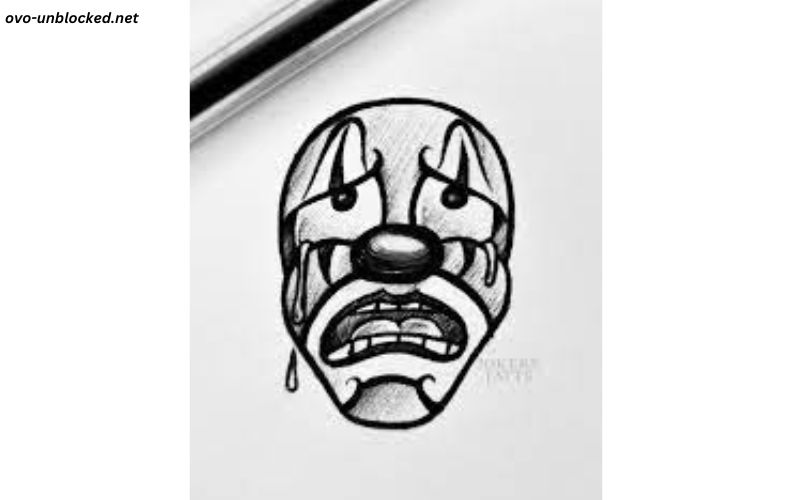Chicano art, an influential movement rooted in the cultural and political experiences of Mexican Americans, has evolved into a profound form of expression that captures the complexities of identity, resistance, and social justice. Among the various forms of Chicano art, drawings hold a special place for their raw, unfiltered ability to convey emotions, stories, and struggles. In this article, we will delve into the world of Chicano drawings, specifically focusing on a unique subset referred to as Easy= Chicano Drawings. This exploration will encompass the historical context, thematic elements, artistic techniques, and the cultural significance of these drawings within the broader Chicano art movement.
Historical Context
The Chicano art movement emerged in the 1960s and 1970s as part of the broader Chicano civil rights movement, which sought to challenge and resist the marginalization of Mexican Americans in the United States. This era was marked by a surge in activism, with Chicanos advocating for their rights in education, labor, and political representation. Art became a powerful tool in this struggle, serving as a means to reclaim cultural identity and voice social concerns.
Drawings, as a medium, played a crucial role in the Chicano art movement. They were accessible, immediate, and versatile, allowing artists to communicate complex ideas and emotions. The Easy= Chicano Drawings are a fascinating manifestation of this period, reflecting the cultural hybridity and resilience that define Chicano identity. While the exact origins of the term “Easy=” remain obscure, it is believed to be a contemporary reference that symbolizes the ease with which these drawings can capture the essence of the Chicano experience.
Thematic Elements
Chicano drawings are characterized by a rich tapestry of themes that reflect the lived experiences of Mexican Americans. These themes often revolve around cultural pride, social justice, resistance, and identity. In Easy= Chicano Drawings, these themes are distilled into powerful visual narratives that resonate with both personal and collective experiences.
- Cultural Pride and Heritage: One of the most prominent themes in Chicano drawings is the celebration of Mexican heritage. Artists often incorporate symbols, motifs, and imagery that evoke traditional Mexican culture, such as Aztec and Mayan iconography, folkloric elements, and religious symbols like La Virgen de Guadalupe. These drawings serve as a visual affirmation of cultural identity, a reminder of the rich history and traditions that define the Chicano community.
- Social Justice and Resistance: Chicano art has always been deeply intertwined with political activism, and this is vividly reflected in Easy= Chicano Drawings. These works often depict scenes of protest, struggle, and defiance against systemic oppression. Images of farmworkers, civil rights leaders, and everyday Chicanos standing up against injustice are common. The drawings act as both documentation and inspiration, urging viewers to continue the fight for equality and justice.
- Identity and Hybridity: The concept of identity is central to Chicano art, particularly the notion of cultural hybridity. Chicanos navigate the complex terrain of being both Mexican and American, and this duality is often explored in drawings. Easy= Chicano Drawings frequently depict characters and scenes that blend elements from both cultures, creating a unique visual language that speaks to the fluid and dynamic nature of Chicano identity.
- Spirituality and Symbolism: Spirituality is another recurring theme in Chicano drawings. The influence of Catholicism, indigenous beliefs, and syncretic practices is evident in the use of religious symbols, such as crosses, saints, and ceremonial imagery. These drawings often explore the intersection of faith and everyday life, reflecting the deep spiritual roots of the Chicano community.
Artistic Techniques
Easy= Chicano Drawings are distinguished by their diverse and innovative use of artistic techniques. These drawings, while rooted in traditional methods, often incorporate modern styles and experimental approaches, reflecting the evolving nature of Chicano art.
- Line Work and Detail: One of the defining features of these drawings is the meticulous line work. Artists employ fine lines to create intricate patterns, textures, and details that draw the viewer into the composition. This attention to detail is not just an aesthetic choice but also a way to convey the complexity and depth of the subject matter.
- Mixed Media: While drawings are traditionally associated with pencil and ink, Easy= Chicano Drawings often incorporate mixed media elements. Artists might use charcoal, markers, or digital tools to enhance their work, adding layers of texture and color that bring the drawings to life. This blend of media reflects the fusion of old and new, traditional and contemporary, that is characteristic of Chicano art.
- Symbolic Imagery: Symbolism plays a crucial role in these drawings. Artists use a variety of symbols—ranging from religious icons to cultural motifs—to convey deeper meanings. For example, the depiction of an eagle, a symbol of both the Mexican and American flags, might represent the duality of Chicano identity. Similarly, the use of barbed wire could symbolize the barriers faced by immigrants and marginalized communities.
- Expressionism and Surrealism: Some Easy= Chicano Drawings are infused with elements of expressionism and surrealism. These styles allow artists to explore abstract concepts, emotions, and dreamlike scenarios that transcend the boundaries of reality. The use of exaggerated forms, distorted perspectives, and fantastical imagery creates a sense of otherworldliness that invites viewers to engage with the deeper psychological and emotional layers of the artwork.
Cultural Significance
The cultural significance of Easy= Chicano Drawings lies in their ability to capture and communicate the Chicano experience in a way that is both deeply personal and universally relatable. These drawings serve as a visual archive of Chicano history, documenting the struggles, triumphs, and everyday realities of the community. They are not just artworks; they are cultural artifacts that preserve and transmit the stories of a people.
- Empowerment and Representation: For many Chicanos, these drawings represent a form of empowerment. They provide a platform for self-representation in a society that has historically marginalized and stereotyped Mexican Americans. Through their art, Chicano artists assert their presence, voice their concerns, and reclaim their narrative. This act of representation is crucial in challenging dominant narratives and fostering a sense of pride and solidarity within the community.
- Education and Awareness: Easy= Chicano Drawings also play an educational role. They raise awareness about social issues, historical events, and cultural practices that are often overlooked or misunderstood by the mainstream. By depicting scenes of protest, cultural rituals, and historical figures, these drawings educate viewers about the rich and complex history of the Chicano community. They also serve as a reminder of the ongoing struggles for justice and equality.
- Preservation of Cultural Heritage: In a rapidly changing world, where globalization and assimilation threaten to erode cultural identities, these drawings help preserve Chicano heritage. By incorporating traditional symbols, motifs, and stories, artists keep cultural traditions alive and ensure that they are passed down to future generations. The drawings become a bridge between the past and the present, connecting Chicanos with their roots while also allowing for the evolution of their culture.
- Inspiration and Solidarity: Finally, Easy= Chicano Drawings inspire solidarity and collective action. They resonate not only with Chicanos but also with other marginalized communities who see their struggles reflected in the artwork. The themes of resistance, identity, and justice that permeate these drawings are universal, transcending cultural and national boundaries. In this way, Chicano art becomes a tool for building alliances and fostering a sense of shared purpose among diverse groups.
Conclusion
Easy= Chicano Drawings represent a vital and dynamic component of the Chicano art movement. Through their exploration of cultural pride, social justice, identity, and spirituality, these drawings offer a powerful and nuanced portrayal of the Chicano experience. Their artistic techniques, rich symbolism, and cultural significance make them not only visually compelling but also deeply meaningful. As both historical documents and contemporary expressions, these drawings continue to inspire, educate, and empower, ensuring that the legacy of Chicano art endures for generations to come.


https://gajweor.pixnet.net/blog/post/162189406